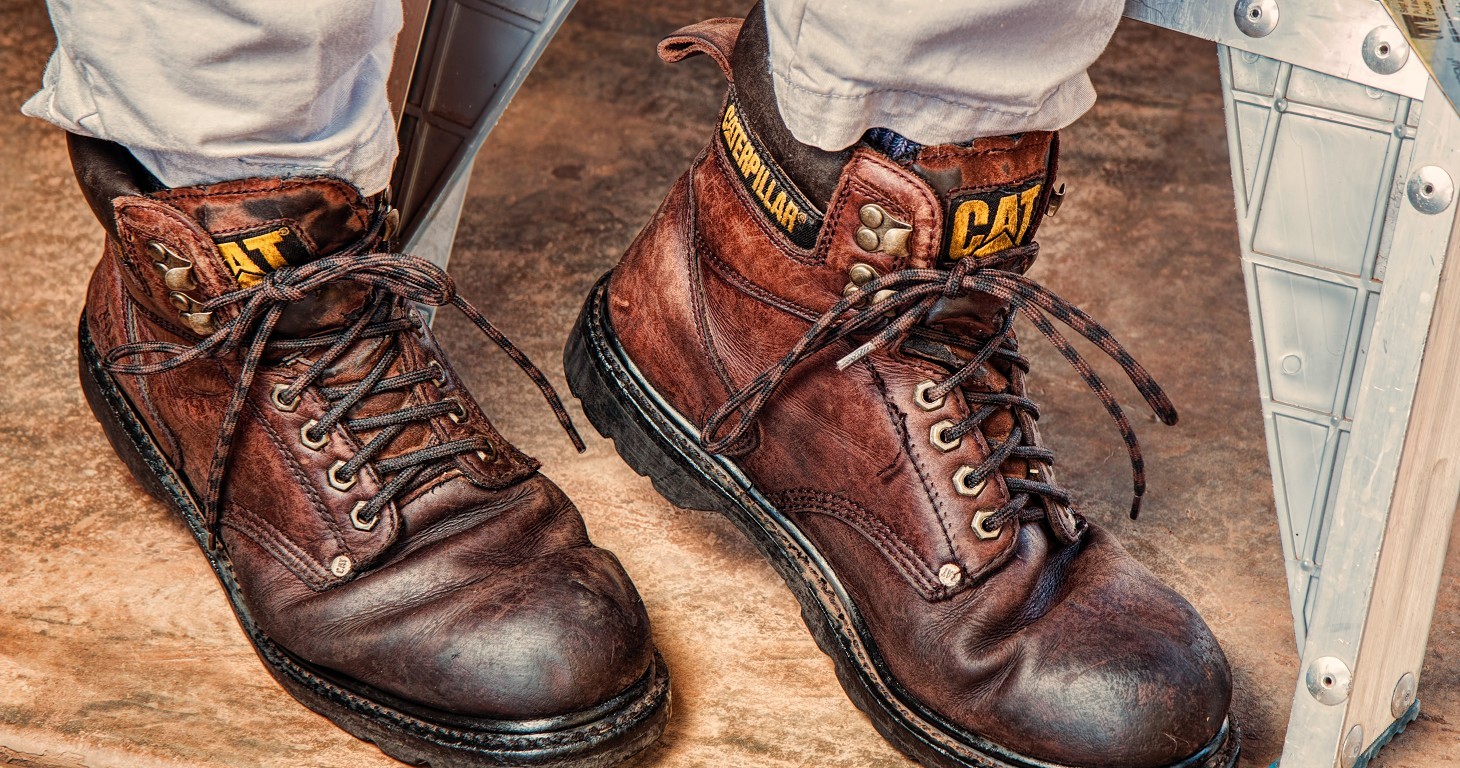
Choosing the right type of safety boot is really important. Especially if you're buying work boots, you’ll want to be comfortable and you’ll want your boots to be durable and your feet to feel protected on site. It is very important that you choose safety boots with the correct level of protection for the job that you are undertaking. There may even be a minimum safety requirement in place for your protection.
You may know what shoe size you are but it is important to choose a good fitting pair of safety boots. You want to make sure that your boots fit comfortably as you will be wearing them for long hours at a time and performing important tasks in them.
When trying on your work boots put your index finger between your heel and the back of the boot, there needs to be enough room to fit your finger deep into your boot because you will be wearing thick socks and need to allow room for comfort. It it feels too tight when you try this, buy a larger size.
It is important to ensure the correct level of protection when buying safety boots, which depends on the potential hazards involved. Consider the risks involved in your workplace which could include your feet being impacted by heavy objects, punctured by sharp objects, getting wet, cold or even electrocuted. So look at how the boots are made and what protections each type of boot offer.
Safety boots typically incorporate protective toe-caps, slip-resistant soles, penetration-resistant midsoles and insulation against extreme heat or cold. Magnum boots, for instance, use codes on the tongue label to determine what level of protection they offer.
Now that you’ve chosen the best size safety boots for you, it’s important to lace them up correctly to avoid accidents. The best way to do this is to sit down and stomp your feet into the ground, ensuring that your feet are well planted, and then begin lacing up your safety boots. Do this with a consistent and firm pressure, all the way to the top of the boot. This avoids excess lace at the ends which could become a tripping hazard. Correctly lacing your safety boots will ensure maximum comfort and prevent rubbing on the heel.
Once you have laced up your safety boots, you’ll want to make sure that you have a good fit. Stand up and wiggle your toes a little. If your toes are touching the end of your boots, you’ll need a bigger size.
Unlike other footwear, safety boots will not stretch as you wear them. Walk around a little to get a feel for them, you’ll also want to make sure that they are not too big for your feet.
There are some things that you can do to take care of your safety boots and help look after them for longer. These include wearing moisture wicking socks, which will help remove sweat keeping your feet and your boots feeling fresher. You also want to make sure that you wash your feet at the end of every day and use an antifungal foot powder.
Keep your safety boots clean by allowing any mud to dry naturally and then brushing it off. Followed by a wipe with a clean, damp cloth. Never put your safety boots in the washing machine or expose them to detergents as this can undo the bonding agents used in the manufacture of your boots.
Waterproof safety boots should be regularly treated as over time they experience a gradual loss or water resistant properties. If left untreated, the leather will begin to harden and crack.
Finally, to help retain the shape of your safety boots, remove the laces before putting them in storage.
You can browse our range of safety boots here, including V12, Goliath, Caterpillar and many more.
Back to blog